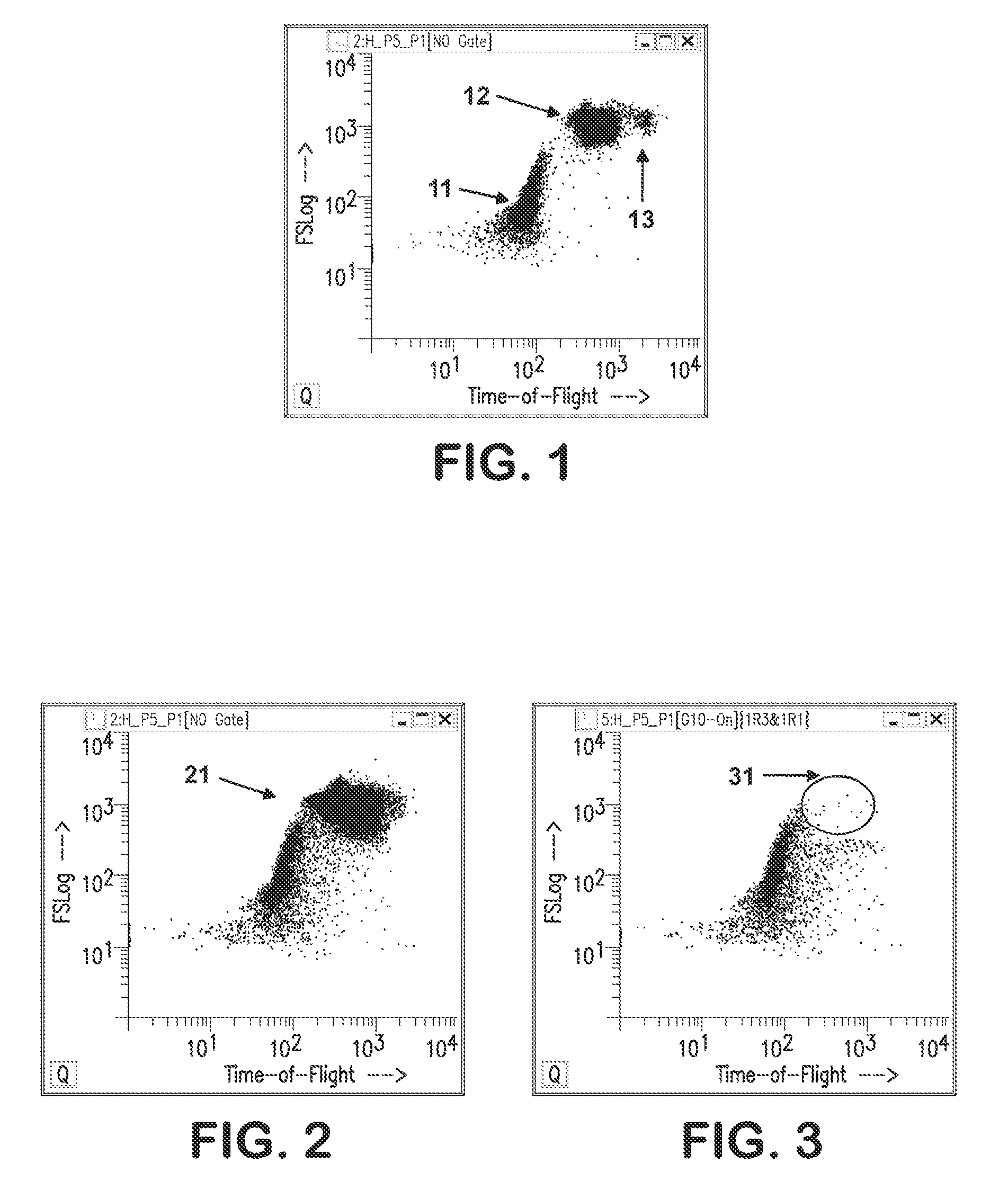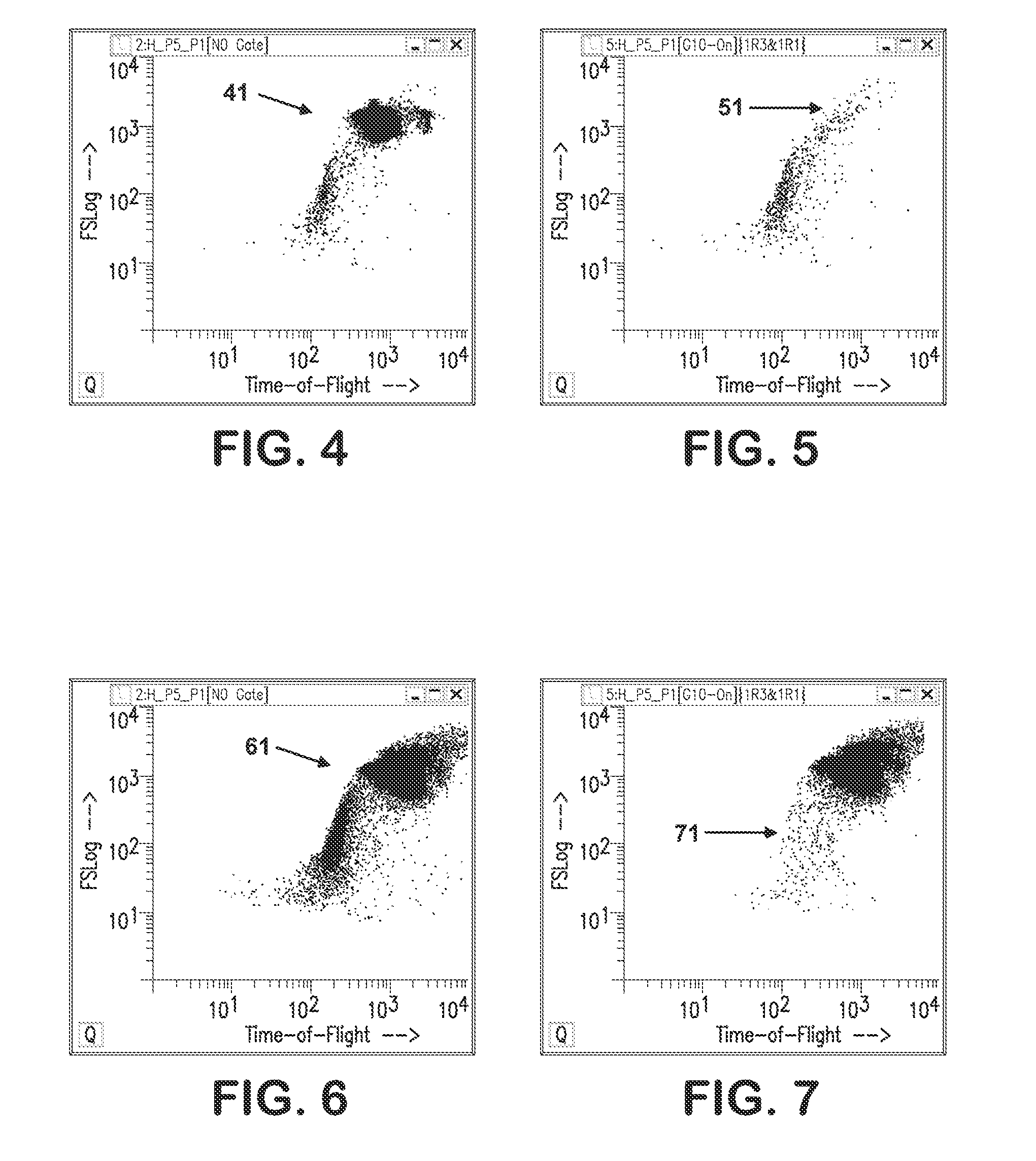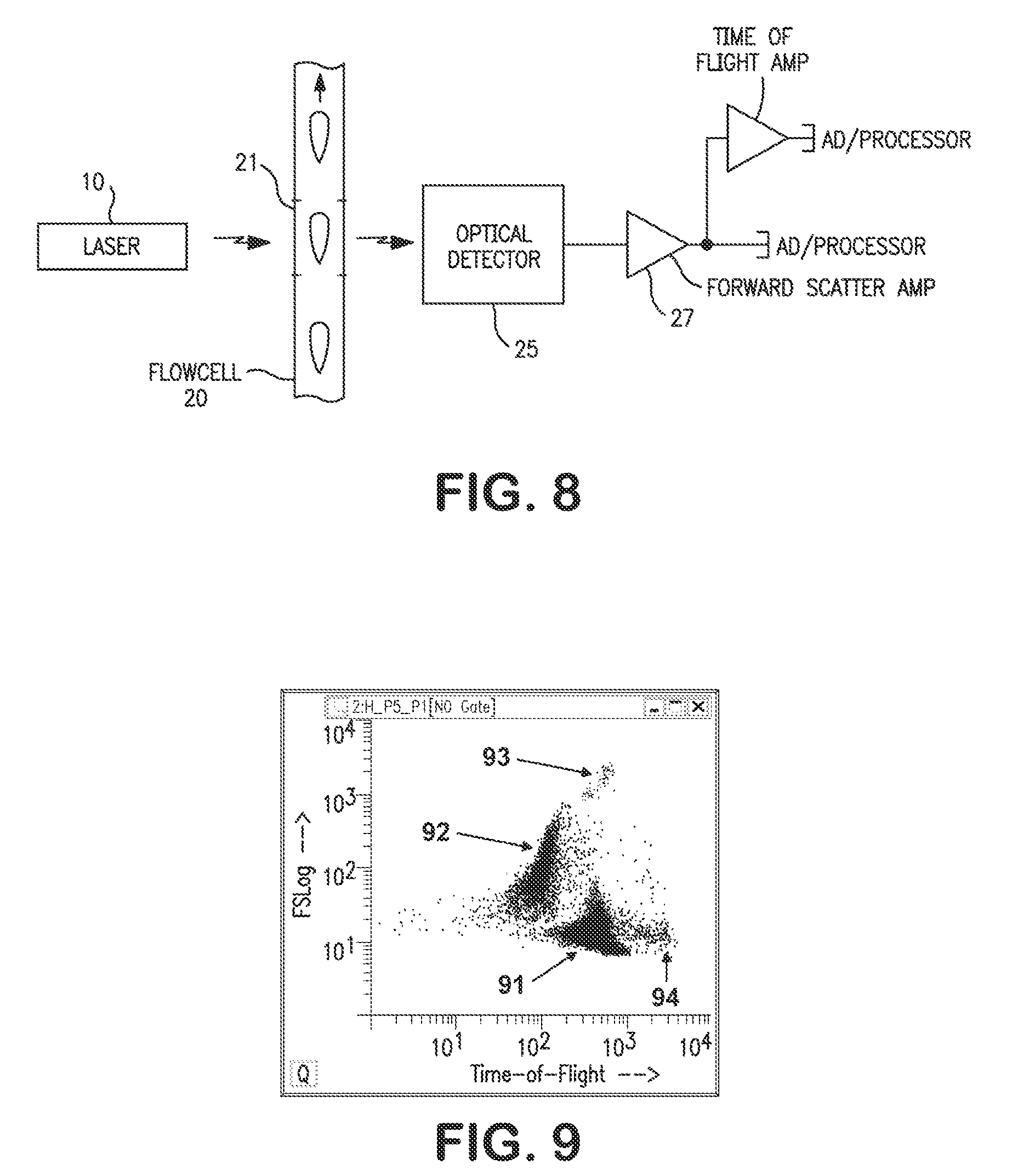Method for discriminating platelets from red blood cells
a platelet and red blood cell technology, applied in the field of platelet discrimination from red blood cells, can solve the problems of insufficient incubation period, prohibitive hardware for low-cost instruments, and relative cost of reagents, and achieve the effect of modifying the index of refraction
- Summary
- Abstract
- Description
- Claims
- Application Information
AI Technical Summary
Benefits of technology
Problems solved by technology
Method used
Image
Examples
Embodiment Construction
[0024]In accordance with the present invention, shortcomings of conventional techniques, including those described above, to discriminate and quantify platelet cells within an analyzed blood sample, are effectively obviated by pre-treating (diluting) a blood cell sample to be analyzed with a ghosting reagent that causes a changing of the index of refraction of the red blood cells. As illustrated in FIG. 9, as a result of this change in the index of refraction of the red blood cells, light scattered from the red blood cells, region 91, is markedly different from (reduced relative to) light scattered from platelets, region 92. The difference in light scattering properties of the treated red blood cells and platelets causes the locations of normal platelets within a scatterplot of the analyzed blood cell sample to fall within a region apart and readily distinguishable from those containing normal and abnormal red blood cells, including fragmented and microcytic red blood cells, and ove...
PUM
| Property | Measurement | Unit |
|---|---|---|
| concentration | aaaaa | aaaaa |
| concentration | aaaaa | aaaaa |
| angles | aaaaa | aaaaa |
Abstract
Description
Claims
Application Information
 Login to View More
Login to View More - R&D
- Intellectual Property
- Life Sciences
- Materials
- Tech Scout
- Unparalleled Data Quality
- Higher Quality Content
- 60% Fewer Hallucinations
Browse by: Latest US Patents, China's latest patents, Technical Efficacy Thesaurus, Application Domain, Technology Topic, Popular Technical Reports.
© 2025 PatSnap. All rights reserved.Legal|Privacy policy|Modern Slavery Act Transparency Statement|Sitemap|About US| Contact US: help@patsnap.com



